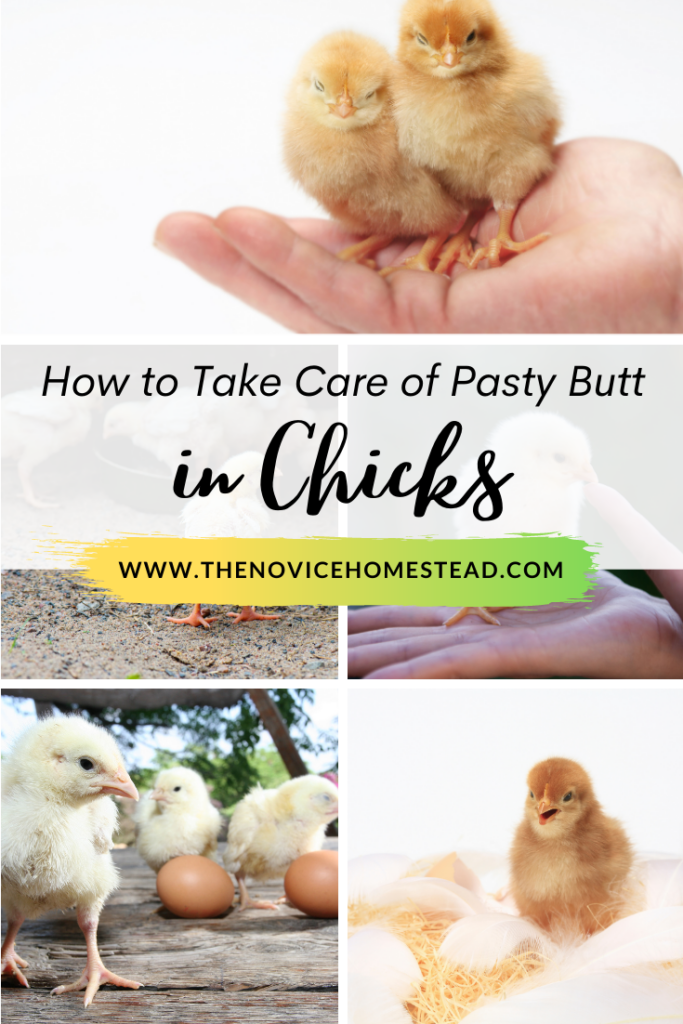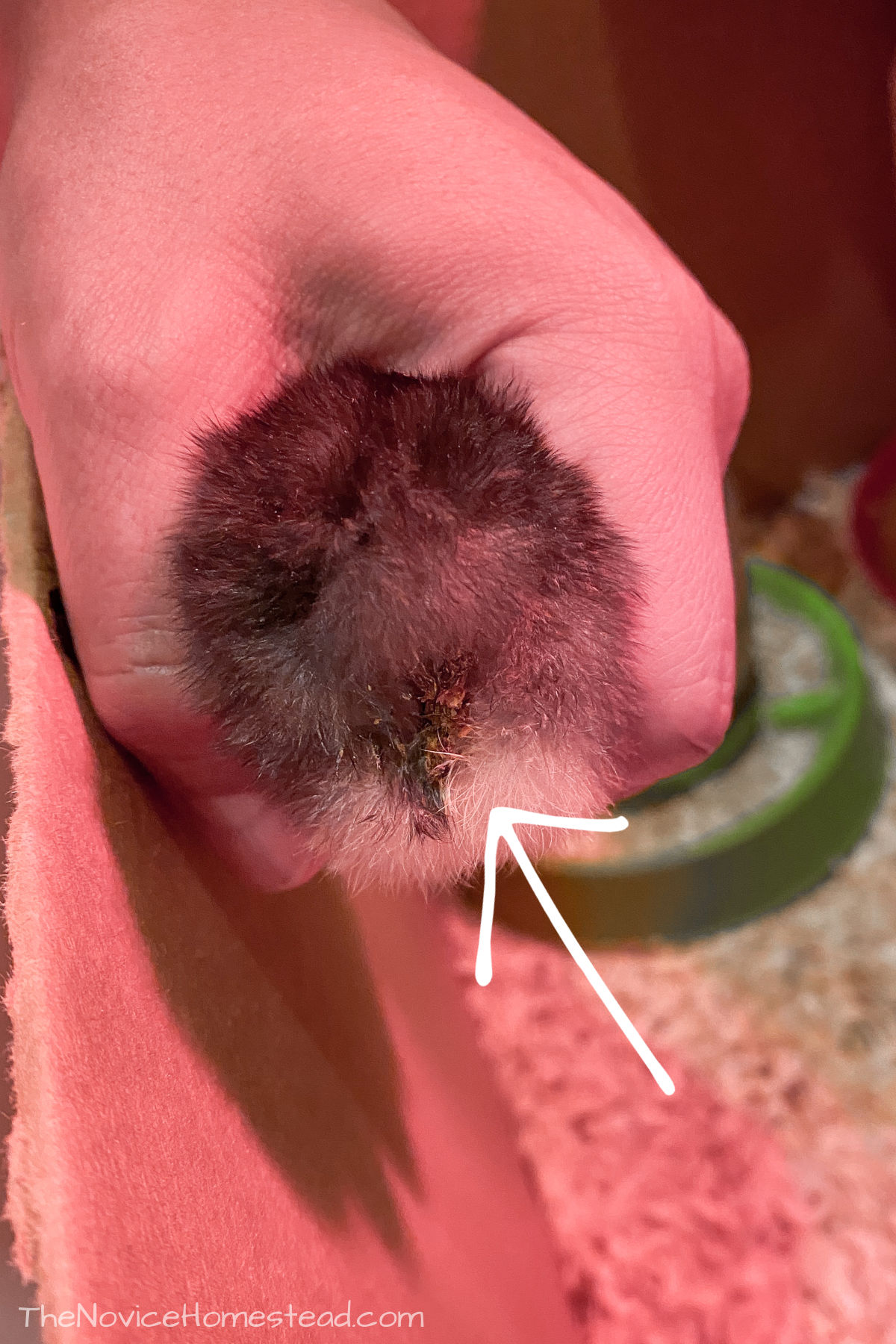Pasty butt is a common issue in baby chicks, but the good news is that it is fairly easy to treat if caught in time. Keep reading to learn about why young chickens may paste up, how to identify it, and how to treat it.

How Do I Know if My Chickens Have Pasty Butt?
Pasty butt is pretty easy to identify — there will be a patch of poop smashed into a baby chick’s backside. Depending on how soon you notice it, the poop may be damp still, or it may have dried.
This is one of the reasons that it is important to handle your chicks daily. Aside from getting them used to being around people, it gives you the chance to catch problems before they become more serious.
If pasty butt is left untreated, it can block a chick’s vent (the hole on their backside where chickens release waste). A plugged vent means that waste gets trapped inside…and well…you can imagine why that is not a good thing.
Related: Check out our guide to raising baby chicks!

What Causes Pasty Butt?
The primary cause of pasty butt is usually stress. Don’t feel too guilty — this can happen when chicks get too hot or too cold during shipping and is often out of our control. If you bought your chicks anywhere but a local hatchery or someone you know, they probably were shipped.
You may not know exactly what caused your chick(s) to paste up. But if you catch it early, you can fix them problem and get your baby chick back to health quickly!
How to Treat Pasty Butt in Chickens
To treat pasty butt, you need to remove all of the poop from your chick’s backside. If you have someone else that can hold the chick while you work, this makes it easier. However, you can do this alone if needed.
If the poop has already dried and hardened, you’ll want to soften it first. Otherwise you could rip out their down and leave their skin raw.
To soften, wet a washcloth with warm water and press gently on the affected area. Hold in place for a minute, then wiggle the washcloth to start to loosen the patch of dried poop.
If this doesn’t work, you may carefully dip the chick’s backside in warm water. Take care not to soak any more of their down/feathers than necessary.
Once the poop is softened, really the best way to remove it is to slowly pull it off by hand. If you have fingernails, this can help separate the poop from the feathers, without hurting the chick’s skin. Yep, you’ve got to pull poop off with your fingers!
I promise, it’s not as gross as it seems because baby chicks don’t make a whole lot of poop yet. And dealing with a little poop is better than dealing with a dead chick!
Once you’ve removed all the poop, pat the chick’s bum dry and return them to their brooder. They should be good to go, but keep a close eye on them for the next couple days to make sure the problem doesn’t happen again.
What if it Happens Again?
Once you’ve cleaned up your baby chick, it’s pretty unlikely that pasty butt will reoccur. If it does, then there is an issue with your chicken’s environment.
If your chick’s brooder box is too hot or too cold, they could be stressed out and this can cause health issues. Click here to learn more about caring for baby chicks, including how to tell if they are in the right temperature.
If the temperature is ok in your brooder, then your food may be the issue. Baby chicks need good quality starter feed, as it is designed with the right nutrients for their age. They cannot have layer feed or adult chicken feed. They also need access to clean water at all times.